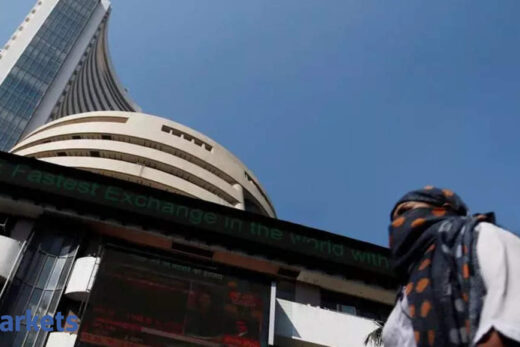When we are on the river of life, it is more than likely that we will hit a few rocks.
Last time active equity funds had their adrenaline rush was way back in 2017. Active managers and stock-pickers had their day in the sun back then, with the market providing ample opportunity for alpha generation.
But that dream run abruptly ended in early 2018. It has been a secular slide since then for all the star managers. The broader market (smallcaps and midcaps) went through a painful period in the next three years. That bruise in the broader market left a bitter scar on active managers across the spectrum of funds, including alternate funds like PMS and AIF.
Of course, during this slide, driven by media’s mercurial narrative, some investors dumped active funds quickly as dreadful debris, even as passive funds emerged the panacea for all the ills.
That is about to change now. The tide is turning in favour of the stock-pickers again, and how!
Where are we in the market cycle now? The answer to this question will tell us what lies ahead. In general, the market cycle mirrors the economic cycle, but with a significant lead. In the initial part of the cycle, action is more in the largecap category, with huge frontloaded returns coming from the Nifty/Sensex.
As visibility improves for the economic recovery, action shifts to the broader market. At this stage, with significant part of returns already frontloaded in the largecap space, Nifty/Sensex will go into the consolidation phase, with the momentum shifting into the broader smallcap and midcap segments. Currently, with economic recovery gathering pace (looking beyond the Covid surge), we may be entering such a bull phase for the broader market.
At this stage of the cycle, market’s proclivity turns towards ‘value’ and it starts rewarding bottom-up stock-picking strategies in a big way. If one draws comparison with the previous cycle seen during 2014-18, one can see a similar pattern play out back then.
Post the initial phase of momentum for largecaps during 2014-15, the action shifted to the broader smallcap and midcap segments in early 2015, which resulted in a bull market in that space and that lasted three long years before eventually topping out in early 2018.
One can’t rule out a similar seductive run for smallcaps and midcaps in the coming months and years. All early signals are out there for such a breakout in the broader market. If resilience in the smallcap space in spite of scary headlines on Covid 2.0 is anything to go by, the market is on course for a major breakout, especially in the broader segments.
All that the market needs for that breakout is the visibility of the some sort of a peak in Covid cases.
That is fine, but, what about the hit on the economy, especially at the bottom end? Aren’t smallcaps and midcaps be the worst hit from this Covid pain? How could one build a bull case for smallcaps and midcaps in such a scenario?
These are very valid questions. The points listed below may offer the required hints to the answers.
- For a moment, let us look at what happened during first wave and its impact on the economy. India had one of the most stringent lockdowns and the least supportive government stimulus. Such a combo, predicted renowned economists, would lead to a dramatic contraction in economic activity for a long time to come. But what happened on the ground, post first wave, was not just a rebound, but a huge resurgence. The strength of that recovery surprised even the most optimistic projections. It was hard to attribute that only to pent-up demand, as the recovery continued well into March 2021 (seven long months).
- As some economists figure out now, in hindsight of course, the strength could be because of cumulative latent demand of last five years. The reason being, India had a painful period of slow growth for the past five years. Much of that was manufactured one.
While demonetisation did the damage for 2016, teething problems from tax reforms (GST) ruined 2017. Just when the economy was coming out of these two shocks, another blow came in the form of regressive Budget in 2019. If they weren’t enough, here we are in 20-21 hit by a deadly pandemic. So five years of growth is what we need to catch up with.
That is a big tailwind for the economy (or call it cumulative pentup demand of last five years) and it will lead to all-round resurgence once we are through with the pandemic waves. Growth will surprise across the spectrum, especially when one factors in the positive effects from past reforms like GST/RERA/DBT and from the ongoing reform measures like PLI, privatisation, asset monetisation etc.
- · Of course, the pandemic has hit certain sectors very hard. Some of them have been hit structurally and they will find it difficult to recover or even survive. Sectors like hospitality, aviation, hotels etc. may face longer term challenges. Barring those few, the outlook for the broader economy in terms of consumer and investment demand looks quite robust. As a result, the market will provide ample bottom-up opportunities for investors.
- More importantly, on the positive side, the pandemic seems to have achieved what demonetization and GST couldn’t, that is, drive a big market shift from unorganised to organized sector. This is leading to major market share gains for organised listed players across the spectrum, from largecaps to smallcaps. Listed companies with strong balance sheets and solid financials (including the ones in the smallcap space) are likely to benefit majorly from this consolidation trend. Add to this, the other positive side effects of the pandemic, that is, global pushback on China (China+1 strategy) and a serious push in India to derisk Chinese imports. These favourable developments are likely to give a major boost to domestic manufacturing.
Convinced? Yes, prospects are brightening for the broader market. It will be busy time for stock pickers and active managers in the coming months. If they get it right, they will be rewarded rich. The shine is likely to be back on the star fund managers.
The risk to this optimistic call could come from any abrupt reversal of monetary easing by US Fed (tapering of quantitative easing or cutting down on bond buying program). The probability for such a possibility is remote though. Interesting times to watch out for.
(ArunaGiri N is Founder CEO & Fund Manager at TrustLine Holdings. Views are his own)



